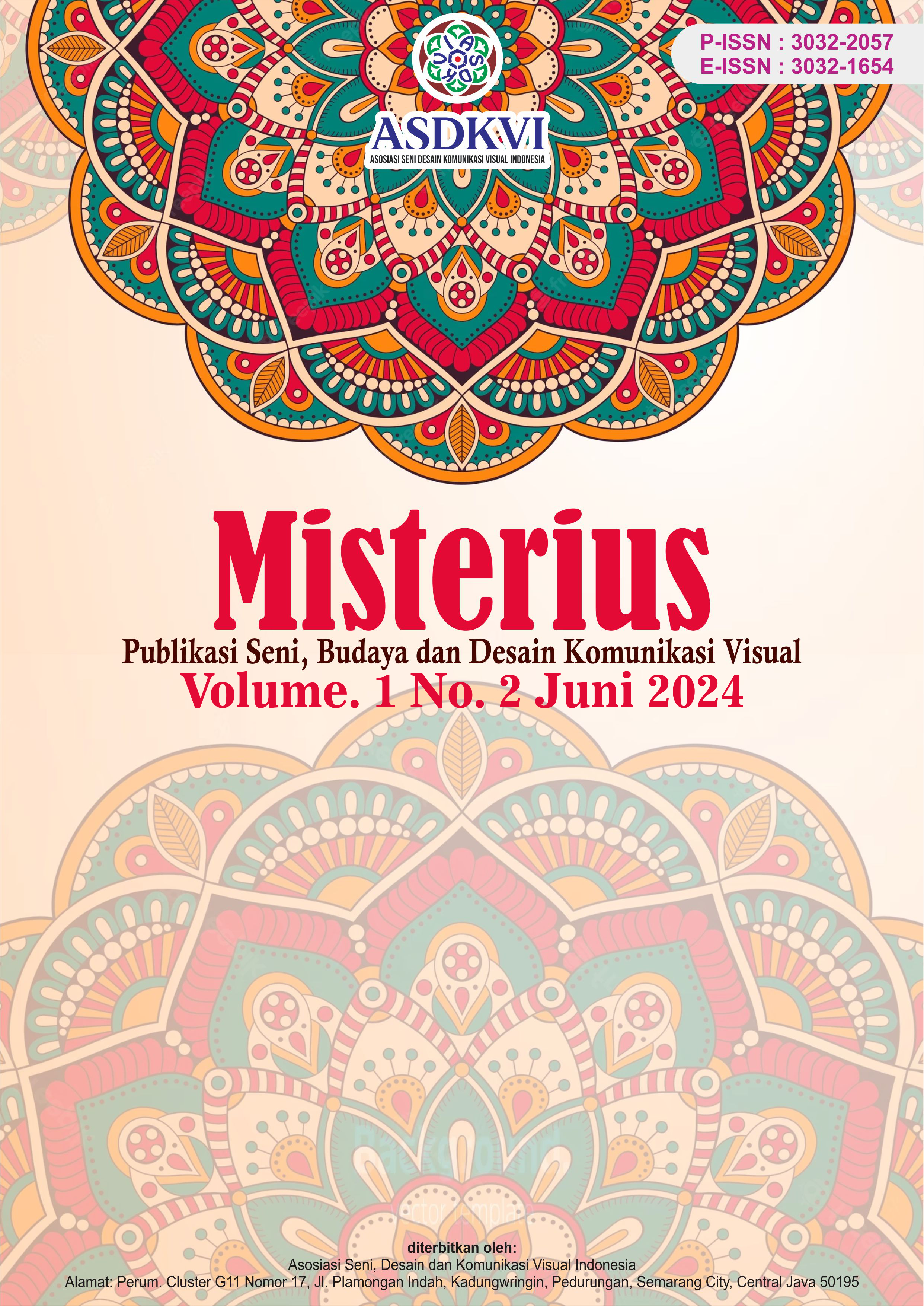Koreografi Tari Maikek Kain di Sanggar Langkisau Kanagarian Painan Timur Kecamatan IV Jurai Kabupaten Pesisir Selatan
DOI:
https://doi.org/10.62383/misterius.v1i2.155Keywords:
Maikek Kain Dance ChoreographyAbstract
This study aims to describe and analyze the Choreography of Maikek Kain Dance at Langkisau Studio in Kenagarian Painan Timur, District IV Jurai, South Pesisir Regency. This type of research is qualitative research using a descriptive method. The research instrument is the researcher himself and is assisted by supporting instruments such as tulsi tools and mobile phones. The data of this study uses primary data and secondary data. Data was collected through literature studies, observations, interviews and documentation. The steps of analyzing data are collecting data, describing the data and inferring the data. The results of the study show that the Maikek Kain Dance has 3 parts, including the beginning as the opening of the dance, the middle part, and the final part as the climax. In this Maikek Kain dance, there are elements of dance composition consisting of; movement, floor design, group composition, top design, dancers, music design, costumes and makeup and props. The movements that the choreographer worked on were taken from the recreated cloth dance. This dance work also looks very interesting with various floor patterns and group compositions so that the audience does not get bored in watching the performance and the dancers who master strong movements and movements. The costume used in the Maikek Kain dance is a simple costume. This Maikek Kain dance raises the theme of Minangkabau women and is taken from the cloth dance and created by music that accompanies the dancers' movements using a fast tempo to the end of the dance with singing drums. The property used in the Maikek Kain dance is the clay cloth.
References
Apriyanto, R., & Nerosti, N. (2020). Bentuk Penyajian Tari Cecah Inai Dalam Pesta Perkawinan Di Kecamatan Rengat Kabupaten Indragiri Hulu Provinsi Riau. Jurnal Sendratasik, 9(2), 1-9.
Armi, R. F., & Mansyur, H. (2022). Bentuk Penyajian Tari Hari Langsung Sebagai Tari Kreasi Masyarakat Kota Pekanbaru. Jurnal Sendratasik, 11(2), 219-226.
Fernando, Y., & Mansyur, H. (2022). Koreografi Tari Zapin Bertasbih Pada Sanggar Tasik Malay Art Di Pekanbaru. Jurnal Sendratasik, 11(1), 103-110.
Hartono. (2000). Peran Sanggar dalam Pengembangan Seni Tari. Yogyakarta: Lentera Budaya.
Indrayuda. (2013). Tari Sebagai Budaya dan Pengetahuan. Padang: UNP Press.
Murgiyanto Sal. (1983). Koreografi. Jakarta: Departemen Pendidikan dan Kebudayaan.
Nerosti. (2019). Metafora Tari dalam Pendidikan. Padang: Sukabina Press.
Rahayu, E. S. (2019). Tinjauan Koreografi Tari Selendang Dulang di Sanggar Anggar Nan Tujuah Kecamatan Koto XI Tarusan Pesisir Selatan (Doctoral dissertation, Universitas Negeri Padang).
Soedarsono. (1977). Pengantar Pengetahuan Tari. Jakarta: Lagaligo.
Sulistyo, E. T. (2005). Kaji Dini Pendidikan Seni. Tari. Surakarta Lembaga Pengembangan. Pendidikan (LPP) TiNS & UPT.
Downloads
Published
How to Cite
Issue
Section
License
Copyright (c) 2024 Misterius : Publikasi Ilmu Seni dan Desain Komunikasi Visual.

This work is licensed under a Creative Commons Attribution-ShareAlike 4.0 International License.





